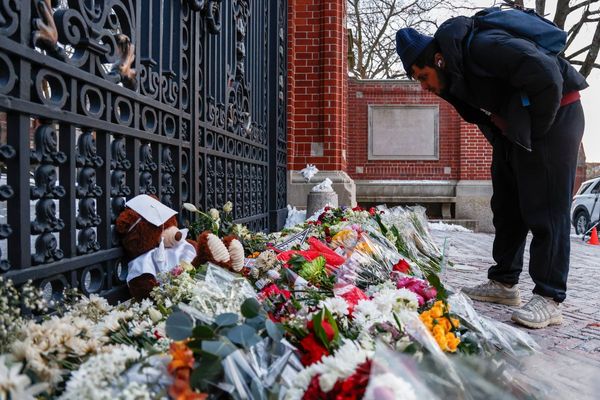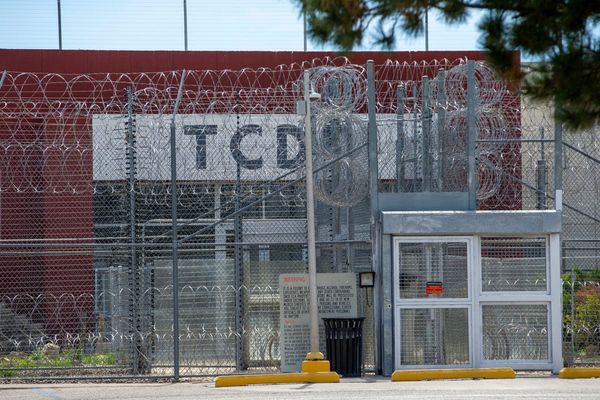
The U.S. birth rate has been declining since the Great Recession, according to the Centers for Disease Control and Prevention, and that problem is about to rear its head in college enrollment numbers.
Birth rate declines started in 2007, and while the CDC shows some years with slight improvements, it's been a downward trend for almost 20 years. With this year's graduating high school class coming from 2007, colleges will have a smaller pool of potential students to draw from.
Higher education consulting firm Ruffalo Noel Levitz projects a big drop in college enrollments beginning in 2033. Lowering tuition can assuage this concern, but that's something colleges tend to do as a last resort. Iowa Wesleyan University offered discounts as a final attempt to stay open, but the university had to shut its doors in 2023 after more than 180 years. The university was founded in 1842.
Don't Miss:
- The same firms that backed Uber, Venmo and eBay are investing in this pre-IPO company disrupting a $1.8T market — and you can too at just $2.90/share.
- Kevin O'Leary Says Real Estate's Been a Smart Bet for 200 Years — This Platform Lets Anyone Tap Into It
An X user overlaid the U.S. birth rate chart on a custom-made college enrollment chart to demonstrate how enrollment numbers may drop in the years ahead.
Is College Worth It?
You wouldn't have heard this question 20 to 30 years ago, but this question has become more prevalent as colleges face a multiyear decline in the number of graduating high school students. Student debt nightmare stories and the ability to land good jobs without a degree have caused more people to question the value of a college diploma.
A Pew Research Survey released last year found that only 22% of U.S. adults believe the cost of college is worth it, even if they had to take out loans. Almost 30% of respondents said that the cost of college was not worth it at all. Furthermore, 49% said a college degree is less important now for landing a high-paying job than it was 20 years ago.
Reduced interest from the customer pool, combined with a declining young population, doesn't paint a rosy picture for colleges. These institutions will have to demonstrate that they can provide value and are worth the high cost of admission.
Trending: Kevin O'Leary Loves ‘Wonderful Recurring Cash Flows' — These Small Industrial Assets Deliver Just That
International Students Won't Save Enrollment Numbers
Many colleges have turned to international students to boost their enrollment numbers and keep tuition high. However, research from NAFSA: Association of International Educators anticipates a 15% drop in international enrollments this fall. NAFSA cited Visa interview suspensions, limited appointment availability, downward Visa trends, and the recent Visa bans as the four factors driving this decline.
President Donald Trump's anti-immigration policies, such as his recent Visa policies, can further reduce demand from international students. His rhetoric can also dissuade some college students from attending U.S. universities.
If a similar result carries over to college enrollment numbers, international student enrollments will also go down.
See Also: From Chipotle to Red Bull, Top Brands Are Already Building With Modern Mill's Tree-Free Wood Alternative — Here's How You Can Invest Too
Party Lines Play A Role
Low birth rates guarantee a decline in college enrollments, but party lines can make it even worse. Pew Research's study didn't just break down how people felt about college. It also separated opinions based on how people voted.
Half of Republicans believe a college degree isn't important for landing a high-paying job, while only 30% of Democrats feel the same way. In addition, Republicans are growing out of favor with colleges at a faster rate than Democrats, and that's an alarming trend for universities.
Trump flipped six states in the 2024 election, indicating momentum for Republicans. Furthermore, 22 of the top 25 states with the highest fertility rates are red states, according to CDC data that was compiled by Value Penguin. All of the 10 states with the lowest fertility rates are blue states.
Colleges face the challenge of a declining student population and having to win over a growing number of consumers who are increasingly questioning the value of a degree.
Read Next: ‘Scrolling To UBI' — Deloitte's #1 fastest-growing software company allows users to earn money on their phones. You can invest today for just $0.30/share.
Image: Imagn Images







